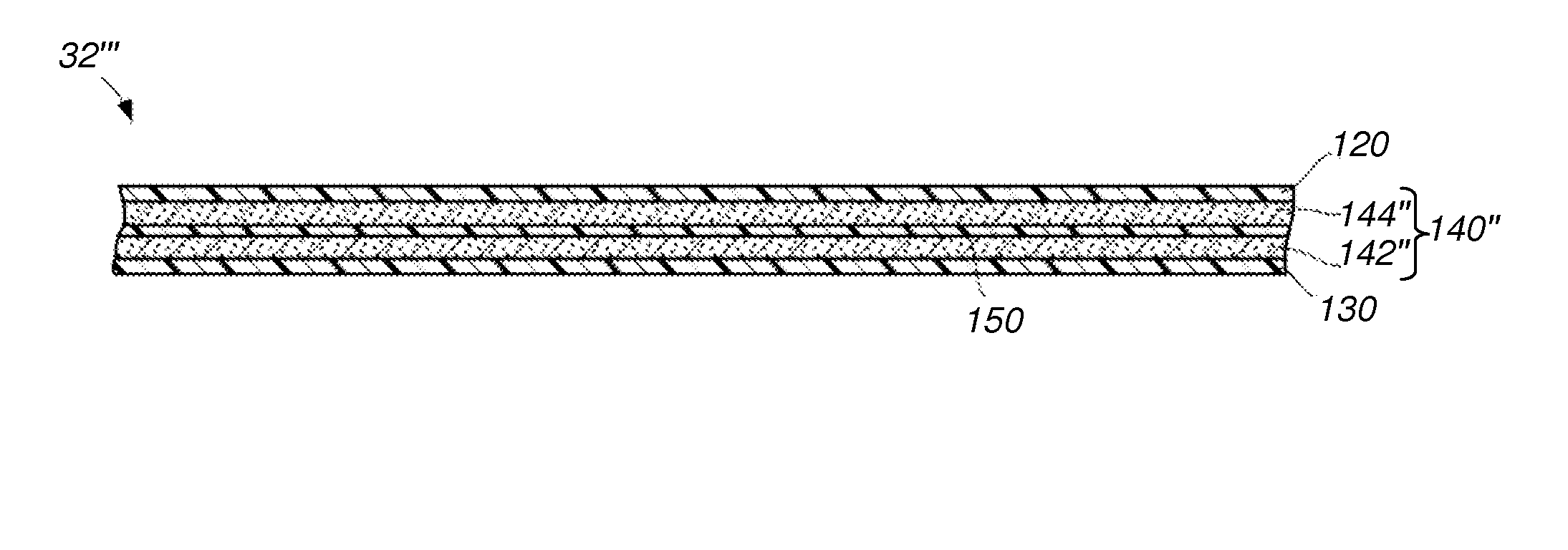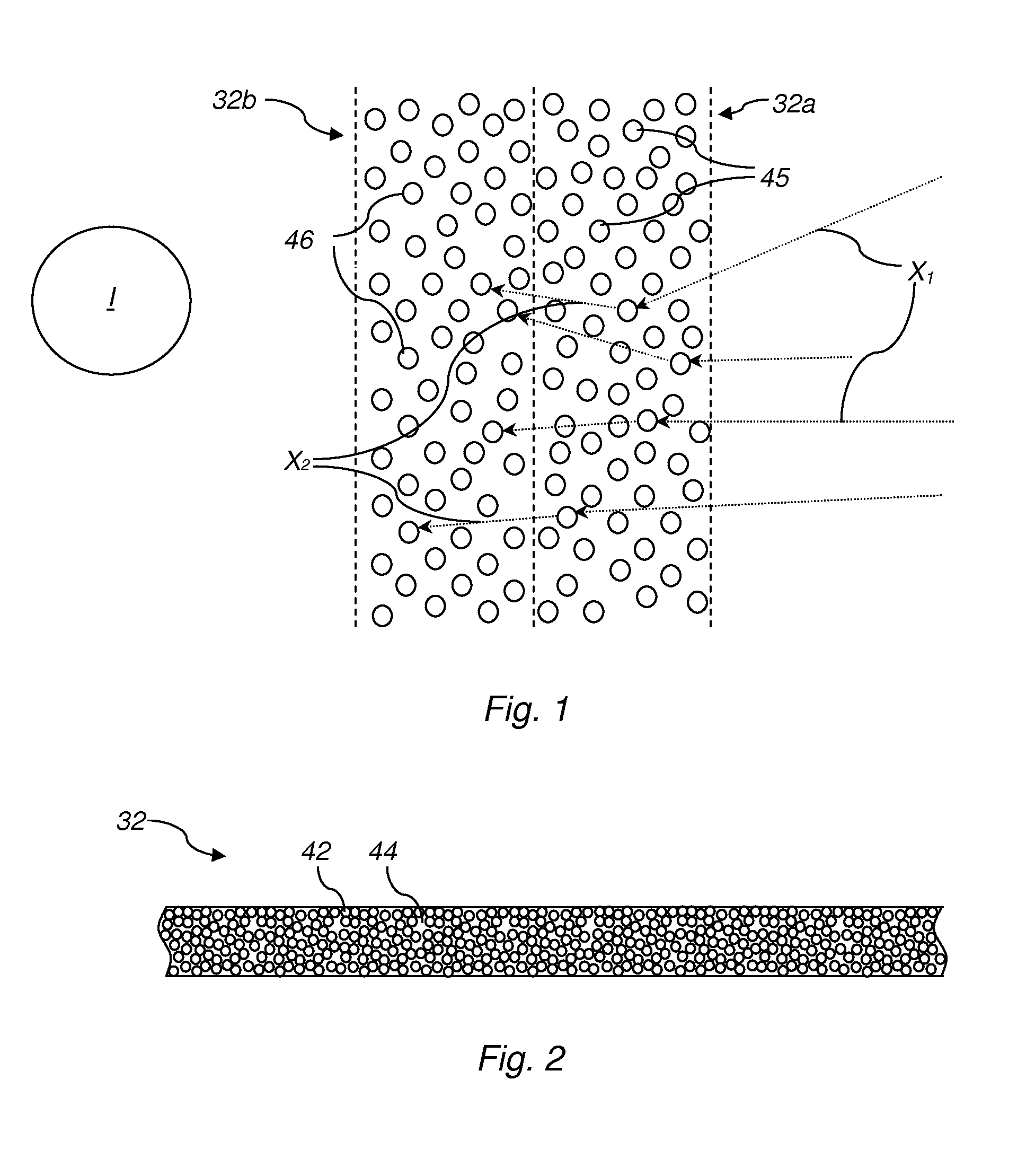Apparatuses and methods employing multiple layers for attenuating ionizing radiation
a technology layers, applied in the direction of radiation-absorbing paints, nuclear engineering, nuclear elements, etc., can solve the problems of increasing the risk of individual cancer, increasing the risk of individual damage to those tissues, and repeated exposure of healthcare providers and/or patients to even low levels of ionizing radiation, so as to reduce the weight or thickness of the radiation shield, improve the efficiency of attenuating ionizing radiation, and reduce the risk of cancer
- Summary
- Abstract
- Description
- Claims
- Application Information
AI Technical Summary
Benefits of technology
Problems solved by technology
Method used
Image
Examples
example 1
[0072]A study was performed to determine the extent to which a radiation shield with two different attenuation elements (layers) will attenuate ionizing radiation. In that study, the attenuation of different amounts of ionizing radiation by a variety of different attenuating elements was determined.
[0073]Four different types of radiation shields were prepared and tested for comparative, or reference, purposes. These radiation shields included lead foil, a lead radiation shield, a lead-free radiation shield and a bismuth oxide radiation shield. The lead foil used in the study was 99.9% pure foil available from Alfa Aesar. The lead shield, which had a thickness of 1.5 mm, was a 0.5 mm lead-equivalent STARLITE radiation shield (Lot #10166) available from Bar Ray Products of Littlestown, Pa. The lead-free shield, which included particles of elemental antimony (Sb) embedded in an elastomeric material at a weight ratio of about 1:1 and had a thickness of 1.9 mm (equivalent to 0.5 mm thick...
example 2
[0083]A dose attenuation study was performed to determine the extent to which a radiation shield with two different attenuation elements (layers) will attenuate ionizing radiation in an operating nuclear power plant. The radiation shield used in the study included twenty-five (25) superimposed layers of barium sulfate particles dispersed in vinyl with a percent solids loading of about eighty percent (80%), by weight, to about eighty-two percent (82%), by weight. In addition, that radiation shield included one (1) layer of bismuth oxide particles dispersed in vinyl with a percent solids loading of about eighty-five percent (85%), by weight, to about eighty-seven percent (87%), by weight. The bismuth oxide layer was superimposed over the stack of twenty-five (25) barium sulfate layers, on a side of the stack intended to face away from a source of ionizing radiation. The performance of the barium sulfate-bismuth oxide radiation shield was compared with the abilities of a conventional l...
PUM
 Login to View More
Login to View More Abstract
Description
Claims
Application Information
 Login to View More
Login to View More - Generate Ideas
- Intellectual Property
- Life Sciences
- Materials
- Tech Scout
- Unparalleled Data Quality
- Higher Quality Content
- 60% Fewer Hallucinations
Browse by: Latest US Patents, China's latest patents, Technical Efficacy Thesaurus, Application Domain, Technology Topic, Popular Technical Reports.
© 2025 PatSnap. All rights reserved.Legal|Privacy policy|Modern Slavery Act Transparency Statement|Sitemap|About US| Contact US: help@patsnap.com



